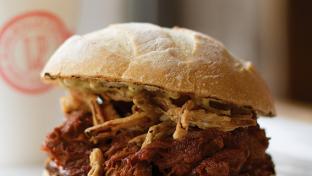Looking ahead
2023 has been a challenging year for foodservice operators, including those operating foodservices in convenience stores. Food inflation has continued to be significant since February 2022, most recently at 6.5% in August 2023 over August 2022. Convenience stores have a labour advantage over commercial foodservice (i.e., minimum incremental labour to provide foodservice); however, while recruiting and retaining labour is easier than it was a year ago, it remains a challenge and the cost of doing so has grown.
With the cost of food and labour being the two greatest costs in providing foodservice, menu prices have increased significantly. Coming out of the pandemic, foodservice operations benefited from revenge spending: People who saved significantly during the pandemic were spending on recreation and entertainment activities, including restaurant meals, at an unprecedented pace. With the post-pandemic euphoria subsiding and consumers growing concerned about the cost of living and the economy, foodservice spending is slowing: 2024 will be yet another challenging year for the foodservice industry.
Customers will seek value
With rising prices and concerns over the economy, consumers will seek value. Foodservice operations able to provide value will succeed. This trend is one that convenience store foodservice operators can take advantage of given their built-in cost advantage. Look at providing (and promoting) quality food at prices lower than area commercial food service competitors.
Historically, restaurant operations price their menu items to achieve a 30% to 35% cost of sales (i.e., a 60% to 65% markup). With the significant increase in the cost of food, menu prices are getting to the point where consumers are rejecting them. Foodservice operations that change the way they do their pricing will be more successful. If the cost to make a menu item increases $1, restaurants would increase the price by $2.86 to $3.00 in order to maintain the 30% to 35% cost of sales. Restaurants that raise prices in this case by, or close to, $1 will maintain the contribution margin of the product without adversely impacting the value perception. You don’t take percentages to the bank.
Sustainable and ethical
Millennials and generation Z are the greatest purchasers of food away from home. For many consumers, especially those from younger generations, concern for the planet is significant. When making purchases, they favour businesses that share their values when it comes to sustainability and ethical business practices.
Successful restaurants are embracing these trends and making sure they are communicating their business practices to their customers.
Convenience store foodservice, in almost all cases, are for consumption off-premises. Packaging of menu items should be limited and recyclable or compostable. In some jurisdictions, operators are working together to implement reusable take out container programs. Disposable takeout containers at some point in the near future, will be unacceptable to consumers.
Ethical sourcing is important to consumers. They want to know where the food they are eating comes from. Make sure you are communicating where the food you serve is coming from, especially if you have a story to tell that will be embraced by consumers.
Technology
The use of technology will continue to be important to foodservice providers.
Technology is being used to increase sales. Mobile ordering applications and ordering kiosks generate greater average checks than traditional ordering methods. Technology never forgets to upsell, suggesting complementary items and allowing customers to customize their order on their own without feeling sales pressure. Some customers are more comfortable upgrading orders to larger sizes when they are requesting it from a machine instead of a human.
Many restaurateurs are using technology to address labour challenges. Replacing the cashier position with mobile apps and order kiosks as described above is one way. Robots are used for repetitive food preparation tasks and fully autonomous restaurants are being developed. Using technology to overcome labour shortages; however, makes the remaining human touch points more important.
Special diets
More consumers are following special diets. Special diets may be followed for health reasons (e.g., those with celiac disease must eat gluten free), cultural or religious reasons, or personal choice. While some consumers will “treat themselves” when dining out and abandon diets based on personal choice, others do not have that option. It will be increasingly important to have menu items that meet special dietary needs. Some are ensuring all meats are halal. Most have plant-based options. Restaurants must have menu options to avoid the veto vote of a person in the group that has dietary restrictions. Further, it is important that customers are able to easily identify what menu items are suitable for their dietary restrictions, they will avoid purchasing if they are unsure.
Canada is becoming increasingly ethnically diverse. Tastes and dietary requirements vary greatly. Foodservice operations must embrace the change. Providing authentic, ethnic dishes appeals to those who long for a taste of their country of origin as well as others who are embracing new flavour profiles.
Jeff Dover is President of fsSTRATEGY, a consulting firm specializing in strategic advisory services for the hospitality industry, with an emphasis on food and beverage. Jeff is a Certified Management Consultant and a member of the International Society of Hospitality Consultants.








